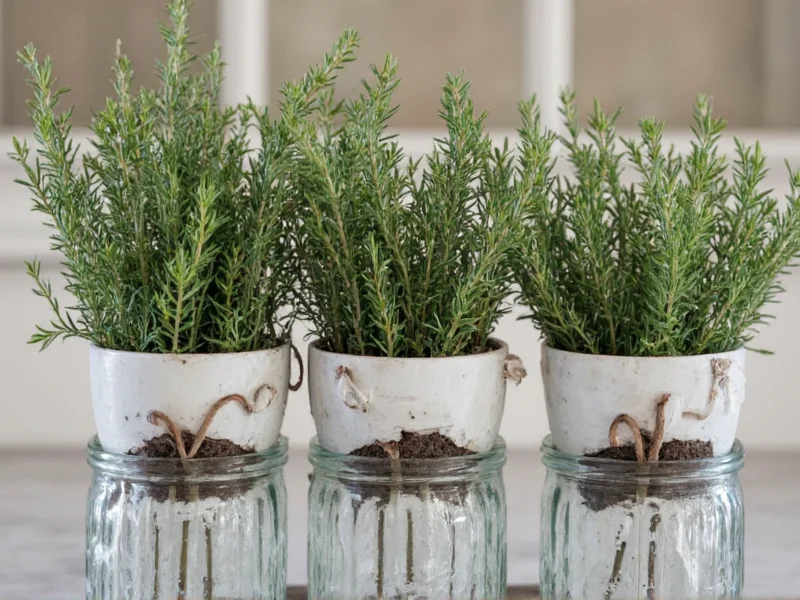Understanding thyme's visual characteristics helps gardeners, chefs, and herbalists properly identify and utilize this aromatic herb. High-quality thyme images reveal distinctive features that differentiate it from similar plants and demonstrate its various growth stages throughout the seasons.
Identifying Thyme Through Visual Characteristics
Thyme's visual identification relies on several key features visible in quality thyme plant images. The herb typically grows as a low, woody perennial with stems reaching 6-12 inches in height. Its leaves measure approximately 3-5mm long, growing in opposite pairs along square stems—a characteristic shared with other mint family members. During flowering season (late spring to early summer), thyme produces tiny tubular flowers in clusters, ranging from white to pink or purple depending on the variety.
When examining fresh thyme images, note the leaf arrangement and texture. Thyme leaves have a slightly rolled-under margin and contain visible oil glands that appear as tiny dots when viewed under magnification. These glands contain the essential oils responsible for thyme's distinctive aroma and flavor profile.
Common Thyme Varieties and Their Visual Differences
Different types of thyme pictures reveal significant visual variations between cultivars. While all share basic botanical characteristics, each variety has unique growth habits, leaf colors, and flowering patterns that make them suitable for specific purposes.
| Variety | Visual Characteristics | Primary Uses |
|---|---|---|
| English Thyme | Dark green leaves, upright growth (8-12"), pale purple flowers | Culinary applications, especially in roasts and stews |
| Lemon Thyme | Bright green leaves with yellow edges, strong citrus aroma, pink flowers | Fish dishes, teas, and as ornamental ground cover |
| Creeping Thyme | Low-growing (2-3"), tiny leaves, dense mat formation, pink to purple flowers | Garden pathways, between stepping stones, ornamental landscaping |
| Woolly Thyme | Silver-gray fuzzy leaves, very low growth habit, rarely flowers | Ornamental purposes, rock gardens, drought-tolerant landscaping |
Thyme in Culinary Contexts: Recognizing Quality
Culinary thyme photography demonstrates how to select the best specimens for cooking. Fresh thyme should appear vibrant green without yellowing or browning. The stems should be firm and flexible, not woody or brittle. When examining thyme herb images for culinary use, look for plants with abundant leaves rather than excessive woody stem material.
Professional food photographers capture thyme at its peak freshness to showcase optimal culinary quality. These images typically feature sprigs with tightly attached leaves that haven't begun to drop—a sign of aging or improper storage. The best culinary thyme images also demonstrate proper harvesting techniques, showing cuts made above leaf nodes to encourage continued growth.
Growing Thyme: Visual Development Stages
A comprehensive thyme visual guide illustrates the plant's growth cycle from seedling to maturity. Seedlings initially develop two small cotyledon leaves, followed by the first true leaves that display thyme's characteristic shape and aroma. As the plant matures, it develops multiple stems with increasing woodiness at the base while maintaining green, leafy growth at the tips.
Seasonal thyme images reveal how the plant responds to environmental conditions. During dry periods, thyme conserves moisture by slightly curling its leaves. In optimal growing conditions, it produces abundant flowers that attract pollinators. Winter images show how most thyme varieties remain evergreen in mild climates but may experience dieback in harsh freezes.
Using Thyme Images for Accurate Identification
When comparing thyme herb images for identification purposes, pay attention to distinguishing features that separate it from similar plants. Thyme differs from oregano by its smaller leaves and more delicate growth habit. Unlike rosemary, which has long, needle-like leaves, thyme features much smaller, oval-shaped foliage.
Common misidentifications occur between thyme and wild thyme (Thymus serpyllum) or mother of thyme. While closely related, these plants have subtle differences visible in side-by-side thyme images. Wild thyme typically grows lower to the ground with smaller leaves, while cultivated culinary thymes maintain a more upright habit.
Where to Find Quality Thyme Visual Resources
For accurate thyme plant identification and cultivation guidance, seek resources from botanical gardens, agricultural extension services, and reputable horticultural institutions. University horticulture departments often provide high-resolution thyme images with detailed captions explaining botanical features.
When using online resources for thyme images, verify the source's credibility. Look for images accompanied by scientific names (Thymus vulgaris for common thyme), photographer credits, and contextual information about growing conditions. Avoid sources that don't distinguish between thyme varieties or provide inaccurate cultivation information.











 浙公网安备
33010002000092号
浙公网安备
33010002000092号 浙B2-20120091-4
浙B2-20120091-4